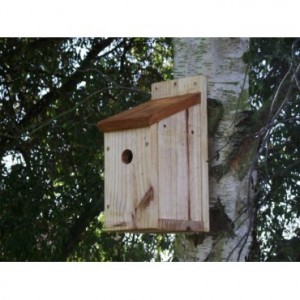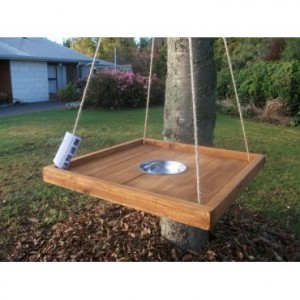Siting a nest-box
This depends on the species the box is intended for. Boxes for sparrows and starlings should be fixed two to four meters up a tree or a wall.
Unless there are trees or buildings which shade the box during the day, face the box away from strong sunlight and the wettest prevailing winds.

Make sure that the birds have a clear flight path to the nest without any clutter directly in front of the entrance. Tilt the box forward slightly so that any driving rain will hit the roof and bounce clear.
House sparrows and starlings will readily use nest-boxes placed high up under the eaves allowing for a clear flight path. Since these birds nest in loose colonies, two or three can be sited spaced out on the same side of the house. Keep these away from areas where martins normally nest.
Open-fronted boxes for thrushes and blackbirds need to be lower down, below 2m, well hidden by vegetation.
Feeders. Never place a nest box to near to bird feeders or bird tables as high levels of activity of visiting birds could disturb nesting pairs.
Fixing your nest-box with nails may damage the tree. It is better to attach it either with a nylon bolt or with wire around the trunk or branch. Use a piece of hose or rubber around the wire to prevent damage to the tree. Remember that trees grow in girth as well as height, and check the fixing every two or three years.
Two boxes close together may be occupied by the same species if they are at the edge of adjoining territories and there is good supply of food.
By putting up different boxes, several species can be attracted.
Nest-boxes are best put up during the autumn. Many birds will enter nest-boxes during the autumn and winter, looking for a suitable place to roost or perhaps to feed. They often use the same boxes for nesting the following spring.
How you can help
Encourage birds to nest in your garden
Providing food, nest boxes, nesting materials, water, and natural habitat can all help in attracting birds to become regular visitors and make your garden their home.






